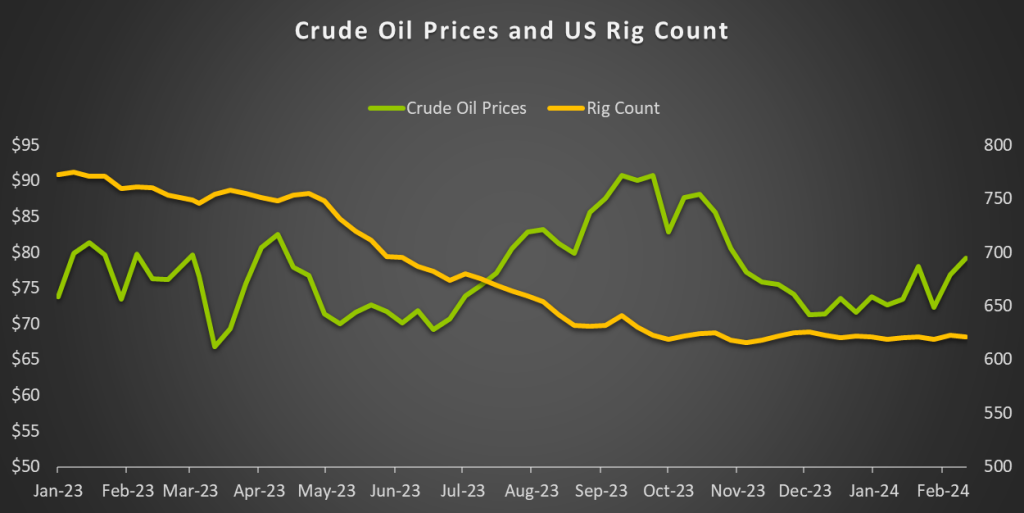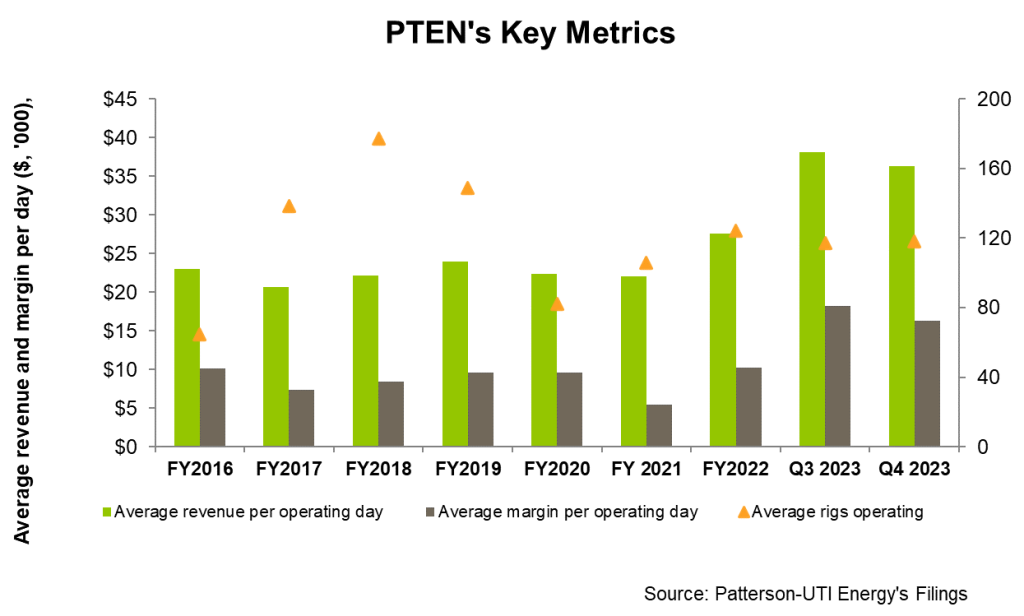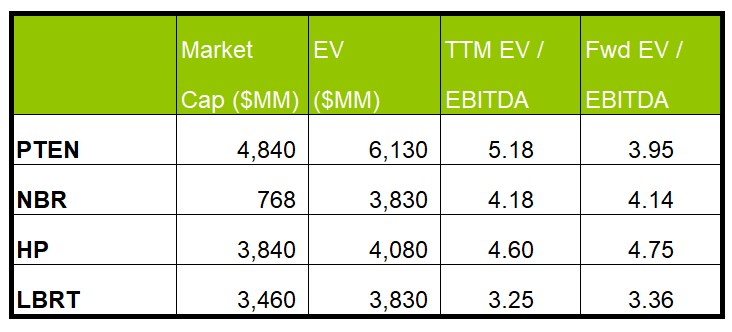Explaining The Drilling Outlook

We discussed our initial thoughts about Patterson-UTI Energy’s (PTEN) Q3 2023 performance in our short article a few days ago. This article will dive deeper into the industry and its current outlook. PTEN’s management expects “reduced cyclicality” in the US shale market; it does not plan to add drilling or completion capacity into the US shale market. However, the oil basins continue to hold a steady activity outlook. In the natural-gas heavy basins like the Northeast and the Haynesville, the company’s operations have been resilient despite a heavy rig count fall in 2023. As LNG demand grows worldwide, the company can potentially add more rigs in these regions. In 2023, the natural gas prices weakened. However, the fall in natural gas prices is unlikely to have much impact on its financial performance. In 2023, crude oil prices were volatile, but the stability in the US rig count appears to have a calming effect on the prices.
As a result of the resilience in the rig count, PTEN expects to average 120 active rigs in Q1 2024 compared to 118 active rigs in Q4 2023. The company’s adjusted gross profit is expected to be relatively flat in its US contract drilling segment. PTEN’s operations is sensitive to commodity prices compared to smaller operators because of improved efficiency. Its Tier 1 drilling rigs are estimated to deliver 35% more lateral footage on average per year compared to standard super-spec rigs. PTEN saw a surge in demand for process and equipment automation packages recently. Alternative power solutions use natural gas and electric rigs for improved efficiency in the drilling process. Approx. 90% of its active rigs are Tier 1 with 90% utilization. The average pricing on recent term contracts has been steady at “mid $30,000 per day,” and the stability can continue in Tier 1 rigs in 2024 as well.
Frac Drivers

The market for horsepower is relatively tight as PTEN sees fracks powered by natural gas remain “effectively sold out.” The company has been investing in fleet to electric and other natural gas-powered technologies conversion. It believes these technologies earn a higher return over the diesel fracks and will replace the legacy equipment. So, profitability will grow in this business. By mid-2024, it expects to operate 140,000 electric horsepower. Nearly 80% of its active fleets will be capable of using natural gas by then. Its natural gas dual fuel assets, including the natural gas-powered electric equipment, have increased its market share as it replaced some third parties with its own technologies. In the completions industry transitions, natural gas dual fuel will be a key stepping stone.
Also, it still has considerable upside from the NexTier and Ulterra acquisitions on the frac side. We discussed the benefits of these two acquisitions in our previous article. It expects to fully realize the target cost synergies ($200 million) by Q1 2025. Ulterra is expected to grow revenue and EBITDA due to rapid growth in the international markets in 2024. Non-US revenues accounted for roughly 30% of Ulterra’s revenues. The business’s topline in Saudi Arabia is poised to double in the next three years, according to estimates by the company. Its drill bits have been used widely in several countries and should continue to grow for the next several years. In the US, too, the company’s revenue per industry rig was up by 5% sequentially due to steady pricing and market share gains.
Capex And Leverage
In FY2024, PTEN expects capex to increase by 20% to $740 million compared to FY2023. This, however, is much lower than the aggregate capex for Patterson-UTI, NexTier, and Ulterra in FY2023. Its cash flow from operations increased by 78% in FY2023 compared to a year ago. It spent $422 million on acquisitions during the year, which led to negative free cash flow in FY2023 from a positive FCF a year ago.
It plans to return at least 50% of its free cash flow to shareholders annually through dividends and share buybacks. It is likely to exceed that commitment in 2024 as plans to return at least $400 million to shareholders in 2024. It has increased its stock repurchase authorization to a total of $1 billion. PTEN’s liquidity was $793 million as of December 31, 2023 (excluding working capital). Its debt-to-equity (0.25x) is much lower than that of its competitors (NBR, HP, and LBRT).
Relative Valuation

PTEN is currently trading at an EV/EBITDA multiple of 5.2x. Based on sell-side analysts’ EBITDA estimates, the forward EV/EBITDA multiple is ~4.0x. The current multiple is lower than its past five-year average EV/EBITDA multiple of 8.6x.
PTEN’s forward EV/EBITDA multiple contractions versus the current EV/EBITDA contrasts its peers because the company’s EBITDA is expected to rise sharply compared to a fall in EBITDA for its peers in the next year. This typically results in a much higher EV/EBITDA multiple. The stock’s EV/EBITDA multiple is higher than its peers’ (NBR, HP, and LBRT) average. So, the stock is reasonably valued, with a positive bias, versus its peers.
Final Commentary
PTEN is making strategic decisions to navigate the dynamics of the US shale market and the global LNG demand. The company’s focus on efficiency, technology, and strategic acquisitions like NexTier and Ulterra are noteworthy. The expected capex increase and non-US revenues growth, especially from Saudi Arabia, indicate a positive outlook for PTEN. However, the negative free cash flow in FY2023 due to acquisitions is a point to consider. Fracks powered by natural gas remain “effectively sold out,” as it expects 80% of its active fleets to be capable of using natural gas by mid-2024.
Its cash increased significantly in 2023 compared to a year ago. Although its capex can increase in FY2024, considering the size after the acquisitions, the increase is lower than anticipated. Plus, it has robust liquidity, which will likely allow it to live on its commitment to return 50% of FCF to shareholders. The stock is reasonably valued, with a positive bias, versus its peers.












